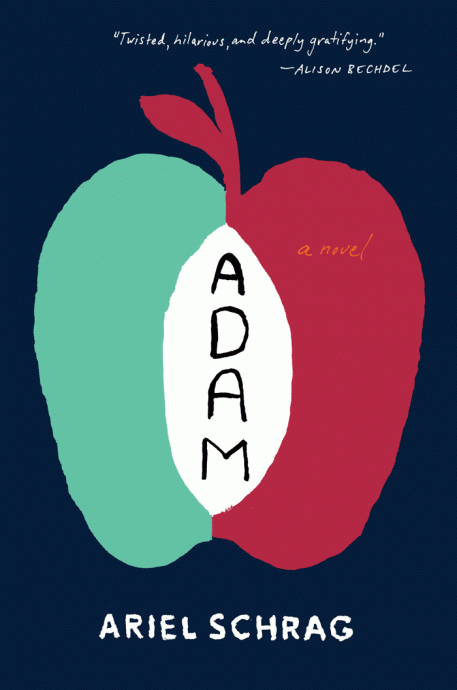An edited version of this review ran at Bitch magazine.
___________
For a lesbian creator, Ariel Schrag is unusually obsessed with penises.
Schrag started her career making autobiographical comics in high school. Her first two books — Awkward, about her freshman year and Definition about her sophomore year — were insightful, deft, sweet coming of age stories. But as she moved into Potential and her junior year, things got considerably darker. Ariel, the character, began to experiment with her sexuality, and Schrag, the creator began to experiment with comics form, culminating in the mammoth senior-year Likewise, an intense, complicated work using multiple styles and a recursive, allusive structure to chronicle Schrag’s twin obsessions with her way-too-straight girlfriend Sally and James Joyce’s Ulysses.
Again, Likewise is an ode to phallicism. Ariel purchases a large dildo for her 18th birthday; she has daydreams about various men with various penises who may or may not be sort of Ariel herself having sex with Sally; she has an intense epiphany while reading Joyce’s description of the ultra-phallic flower Saxifragia stolonifera, “father of thousands.” “Oh my god, that is so perfect,” Ariel in the comic thinks, as Schrag the artist draws the flower in emotive charcoal, one of the loveliest images in the graphic novel.
Given this interest in pensises, it’s perhaps not surprising that Schrag’s first novel, Adam, stars somebody who has one. The title character is not a lesbian, but a nerdy adolescent virgin guy obsessed (like young comic-book Ariel) with girls. He has little luck with them…until he visits his lesbian sister in New York and is mistaken for a trans man. He ends up having to tape his real penis down with Ace bandages in order to use a strap on to have sex with the love of his life, a lesbian named Gillian.
The gender-crossing here quickly becomes vertiginous — especially if you read Adam as Schrag in drag, a gay cis woman pretending to be a heterosexual cis man pretending to be a trans heterosexual man in order to have sex with a cis gay woman. Schrag, for her part, acknowledged in an interview that “Adam is mostly me.” She added:
“I like the idea that 1. Someone reading Adam would find my depiction of a male teen to ring true and that this implies the differentiation between male and female is perhaps less stark than some believe and 2. That someone might read Adam and find that my depiction of a male teen doesn’t ring true to them, perhaps strikes them as more “female” and that this implies that Adam himself is innately “female” in some ways, making his passing as a trans man perhaps less of a (or at least a different nature of) deception.”
The idea of gender as deception is of course familiar from the catchphrase, not-quite-correctly attributed to Judith Butler, that “gender is performance”. Cis-Adam pretending to be trans-Adam can be seen as a kind of dress up. But it can also, as Schrag says, be seen as a kind of truth, since Adam is really Schrag identifying as Adam. Or, to put it another way, you could see Adam as an authentic performance of Schrag’s masculinity.
Schrag herself suggested to me that this was how she sees the character.
“When I was a teenager and in my early twenties, masculinity was very important to me. My hair was cut short, I dressed like a boy, and was often mistaken for one. The primary kind of sex I had with women was using a strap-on and I was always the one to wear it. I would go to strip clubs and get lap dances. I would tell people about going to the strip clubs and be thrilled by their shock and amusement. Acting “masculine” made me feel powerful, and more importantly, cool. It was lame if a guy went to a strip club, but cool if a girl did. I do not have these feelings anymore. Not that I’m anti-strip club, but I don’t think it’s especially cool when women—opposed to men—enjoy them. Much of Adam is about exploring my own relationship to masculinity and the way I observe it functioning in the world.”
Schrag added, “as someone who has sex using strap-ons, I did take a certain delight in forcing this teen boy, all his equipment in working order, to have to use a strap-on as well. ”
What’s best about that last comment is the multi-layered way in which it performs masculinity all by itself. The touch of competitive vindictiveness, the amused-but-still joke about whose penis is better (if not bigger) — those seem like recognizably male tropes.
Which isn’t to say that Schrag wants to be a man, any more than the trans men in the novel are women (despite the claims of one drunk, politically incorrect lesbian in the book.) Rather, it’s to say that the fascination with men, the competitiveness, and even the failure to be a man, are all “definition” masculine, as a younger Ariel might put it. Being a man is about not being a man. And that being a man by not being a man is painful and ridiculous and sad and sweet, much like Adam, or like Schrag, him- or herself.

